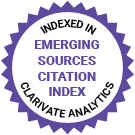Recent Articles


Making optimal use of mobile health technologies requires the validation of digital biomarkers, which demands high levels of participant adherence and retention. However, current remote digital health studies have high attrition rates and low participant adherence, which may introduce bias and limit the generalizability of the findings.

Despite the promise of digital therapeutics in providing scalable interventions for psychosis, translating them from clinical trials to routine care is challenging. SloMo is an evidence-based, digitally supported cognitive behavioral therapy for psychosis comprising a web-based therapy platform and mobile app. The therapy encourages individuals to slow down for a moment, to address fast-thinking habits fueling paranoia. SloMo has received a NICE Early Value Assessment recommendation for use in the National Health Service to address evidence gaps related to its use in the real world, and an implementation study is underway.

Telemedicine services have been developing rapidly worldwide. Following the 2018 policy enabling telemedicine for follow-up patients, this service model has gradually gained popularity in China. However, little has been done to understand the policy’s implementation across different types of medical institutions or to evaluate its effectiveness.

Trust in AI remains a critical barrier to adoption of artificial Intelligence (AI) in mental health care. This study explores the formation of trust in an AI mental health model and its human–computer interface (HCI) among clinicians at an online mental health clinic in the Region of Southern Denmark with national coverage.


Health messages are integral to smoking cessation interventions. Common approaches to health message development include expert-crafted messages and audience-generated messages, which produce messages that can be monotonic, didactic, and limited in number. We introduce an alternative approach to health message development that relies on user-generated content available on open content platforms as a source of health messages.

Although various applications (apps) have been developed to support health behaviors, they are mostly commercial, possibly limiting the number of users. The ME-BYO index was developed by Kanagawa Prefecture in 2019 to comprehensively and numerically measure and visualize an individual's current health status and future disease risk by quantifying data. The ME-BYO index is free of charge, so it can be made available to as many prefectural residents as possible for health promotion. Effective online strength training programs are being developed that, when combined with ME-BYO index measurements, will help with both exercise habits and health management.

Chat Generative Pre-trained Transformer (ChatGPT) excels in natural language tasks, but its performance in the Chinese National Medical Licensing Examination (NMLE) and Chinese medical education remains underexplored. Meanwhile, Chinese corpus-based large language models (LLMs) such as ERNIE Bot, Tongyi Qianwen, Doubao, and DeepSeek have emerged, yet their effectiveness in the NMLE awaits systematic evaluation.

Digital mental health platforms often consist of many different forms of self-care exercises. To our knowledge, whether the number of choices presented to the users affects their uptake and experiences and poses negative consequences (i.e., not choosing any exercises, choice dissatisfaction) for users, especially those experiencing anxiety and depressive symptoms or unpleasant state emotions have not been empirically investigated.


Needleless access devices are essential for intravenous therapy but can be a source of contamination and catheter-related bloodstream infections (CRBSIs) if not disinfected properly. The BD PosiFlush SafeScrub (Becton, Dickinson and Company) is designed to support aseptic nontouch technique (ANTT) by incorporating a built-in reminder to “scrub-the-hub” before flushing. This feature can help improve compliance with disinfection practices and may reduce the risk of microbial contamination.
Preprints Open for Peer-Review
Open Peer Review Period:
-
Open Peer Review Period:
-













